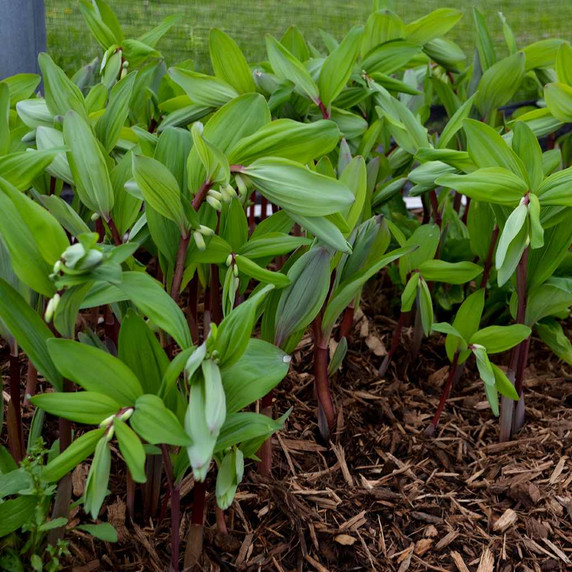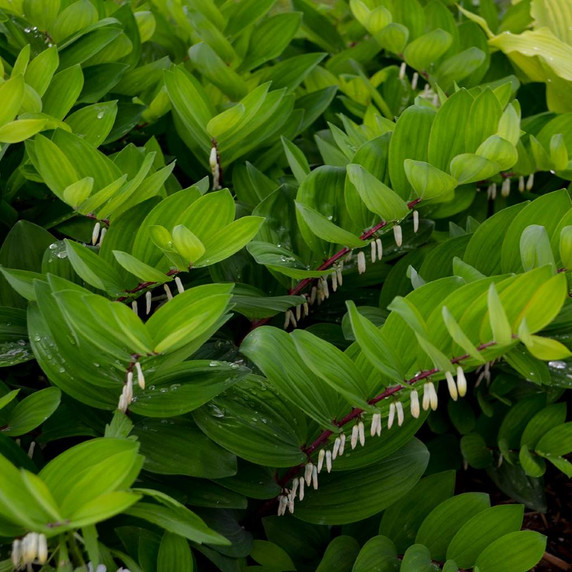Solomon's Seal 'Ruby Slippers' features red stems from the base to the tips and white drooping flowers.
Slow to grow, but long-lived perennial. Good plant for the sun/shade transition part of your garden. Tolerates drier shade.
Good companion to Hosta.
Poisonous if ingested.
Blooming Time: April/May to late May
Size: 21" tall x 10-21' wide
USDA Zones: 3 to 9
Culture: filtered sun, half shade, full shade, adaptable to any soil (sandy, rocky, average, loamy, clayish). Somewhat drained soils are the best but tolerates drier shade too. Avoid waterlogged and poorly draining soils.
Moisture Needs: medium-moist,medium (average), medium-dry
Origin: originates in Japan
Black Walnut Tolerant: yes
Deer/Rabbit Resistant: yes / yes
Attracts Butterflies or Pollinators: no/ yes - small native bees and bumblebees
Attracts Hummingbirds: yes
Pot Size: square 3.5" x 4" deep perennial pot
Plant Combinations: Typical woodland edge or woodland clearing plant. Half-shade beds, shaded parts of bigger rock garden, bigger crevice gardens, shade or woodland gardens. Spreds a bit irregularly, but does form more dense colony in time.
Looks the very best if combined with fine grassy-leaves of Carex (sedges), Deschampsia and Sesleria. Other good companions can be Aruncus, Astilbe, woodland Aster (Aster cordifolius, divaricatus etc),Brunnera, Epimedium, Gillenia, Hosta, Hakonechloa (Hakone Grass), Iris cristata, Iris tectorum and other Asian woodland Irises, Ligularia, Rodgersia, Syneilesis, Tricyrtis (Toadlily), Uvularia, woodland Anemone (native and non-native) or any other shade tolerant plant. Other good companions can be native spring ephemerals (Delphinium tricorne, Jeffersonia, Sanquinaria, Stylophorum, Trillium, etc).
Picture Copyright: Walters Gardens






